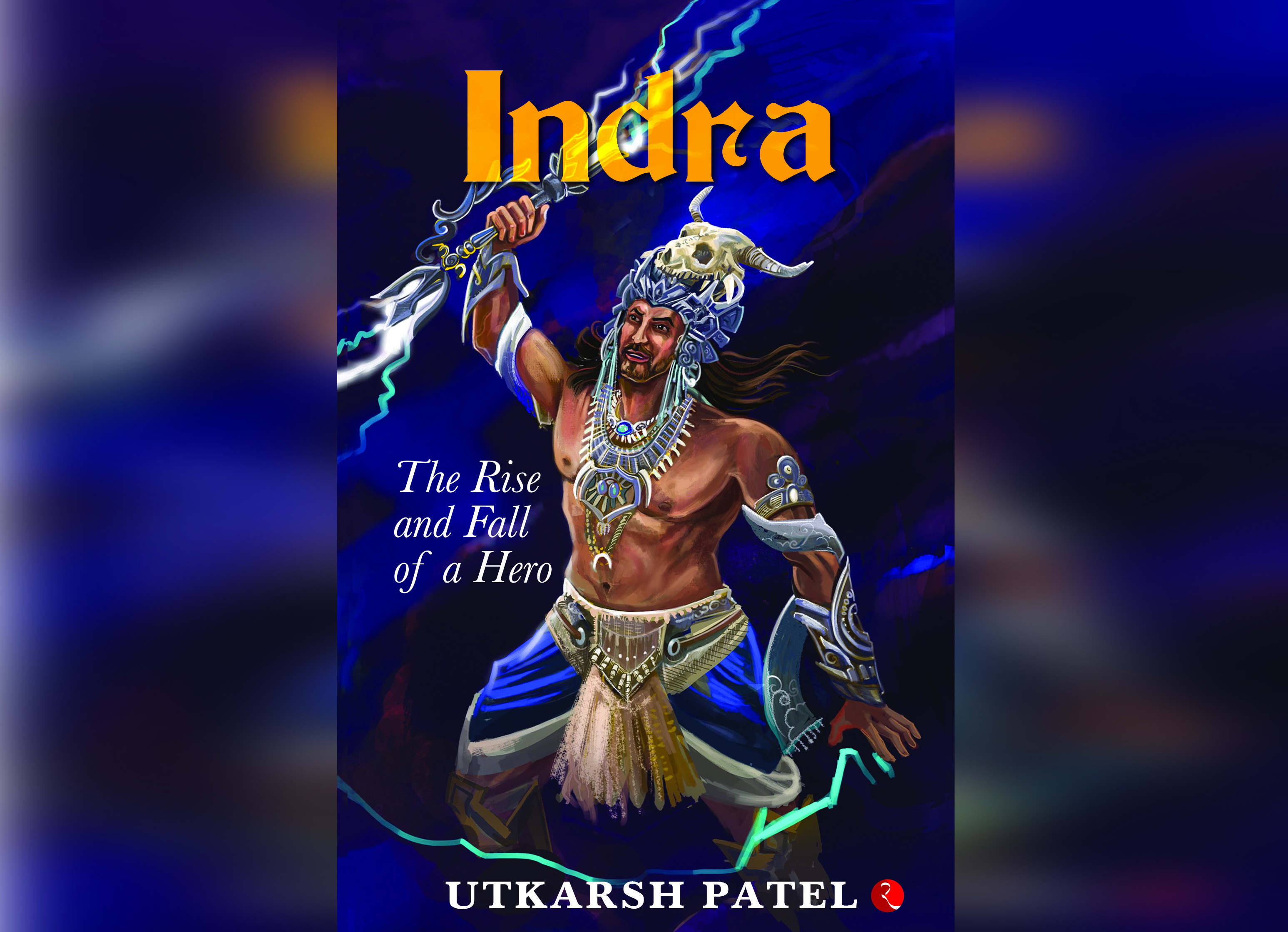Sunny Dua
Name : Indra – The Rise and Fall of A Hero
Author : Utkarsh Patel
Publisher : Rupa Publications India Pvt Ltd.
Genre : Mythology
Indra – The rise and fall of a Hero is a Vedic period mythology wherein people worshiped elemental gods like Indra, Vayu and Varun, the Sun and even Agni. Post Vedic period people worshipped Lord Brahma and Lord Shiva as well. The Rig Veda has close to 250 hymns dedicated to Indra and about 300 hymns refer to him in association with other Gods. Indra is also mentioned in other texts, like the Atharva Veda, the Satapatha Brahmana and, of course, the epics Ramayana and Mahabharata.
Here in this book that’s written by Utkarsh Patel, a lecturer of comprehensive mythology at the University of Mumbai, the story of Indra has been told in such a meticulous manner that everyone can draw inspirations, learn lessons and even take home good messages about ways of life in abundance.
Indra, who is also referred to as Rain god or deity of fertility in the Vedic period has his reference in the form of 250 dedicated hymns in Rig Veda and about 300 hymns that refer to him in association with other gods. Small stories about his rise and fall have so well been woven in three parts of this book that one gets pulled into the pages only to finish reading without disruption. Defined as a one time super hero who even surpassed gods of that era, the author has done justice with the character to the core.
Indra’s ability to give boon to women for having babies, his associations with women, his fighting skills and liking for Soma have all been methodically depicted in the first half of the book. The second half deals with Indra’s fall, especially the story of Goverdhan Parvat wherein Lord Krishna nailed the Rain god and made him realise that there are still superpowers that can bar people from worshipping him. Lord Krishna ensured that Indra was made to know that days of his worship were over and that his fall had started.
The book goes on to explain how Indra, known for his brilliant strategic wars with demons, defeated his enemies and won over people’s especially sages’ hearts. Popularly known as warrior god, Rain god, fertility god and even thunder God many epic battles won by Indra have also been mentioned in Rig Veda. According to Utkarsh Patel, “This God is Hero and post Vedic period Lord Shiva and even Lord Brahma also gave derogatory references to Indra.
A warrior Indra having won many battles was later described as scared and insecure. At one time, even sages criticised him. The book goes on to tell how and why such a great hero was reduced to such a sorry figure. Utkarsh Patel has tried to bring that element out. How Indra became a hero and how he ran to Lord Vishnu to seek help when child Krishna ridiculed Indra is another story told ably by the author. Usually sages don’t curse god but when we trace the rise and fall of Indra, this is believed to have happened. This book in nutshell can be the story of the rise and fall of every civilization.
Though there is little information available about Indra, Utkarsh Patel through his research has tried to bring to the foreground many not-so-heard stories which need to be studied by the students of mythology. When Indra lost battle with the son of Ravana, Meghnad earned the name of Indrajeet. This had led Indra to feel insecure. To be precise, Ukarsh Patel has in the first part of the book described about Indra’s birth, his family, brother Varuna, friend Mitra, his youth days, conflicts, his teacher rishi Gautam and his association with Ahalya.
The second part deals with his wars with Vala and Namuchi that established Indra as a warrior par excellence. His war with Vritra, son of sage Twashta is the ultimate one wherein sage Dadhichi offered his sacrifice to deal with Vritra. The sage who was belled with weapons of excellence has hidden them in the wedge of a tree and on seeing them rusted he had cared to wash them but noticed all their brilliance getting dissolved into the water. The sage drank that water and all powers of weapons were transformed into his bones.
Utkarsh Patel has very ably explained how sage Dadhichi sacrifices his life and allowed Indra to make weapons from his bones which were ultimately used to kill Vritra who had created havoc for the people by stealing their cattle and stopped water to the villages. Having come home to a hero’s welcome Indra was living comfortably until he earned the curse of sage Gautama that he would fall sick and suffer from a debilitating disease. These stories that have never been told are also worth a read.
From here inwards the fall of Indra starts. What’s Indrotsav, how he was accused of a Brahma-hatya, how he was replaced with Nahush and how the festival of Indrotsav was cancelled is all what makes the book interesting. The reference of LordVishwakarma who was entrusted with the task of building Indra’s palace but was ousted as Indra was not satisfied is also worth a read. The epilogue speaks of how societies are forms, why gods are worshipped and how rules for any civilised societies are formed. These references are worth pondering upon but in any case the book of mythology is a must read for anyone who intends to know and explore more about Vedic and post Vedic periods. Utkarsh Patel’s other novels on Shakuntala, Satyavati and Kannaki are also worth reading and informative.
Trending Now
E-Paper


